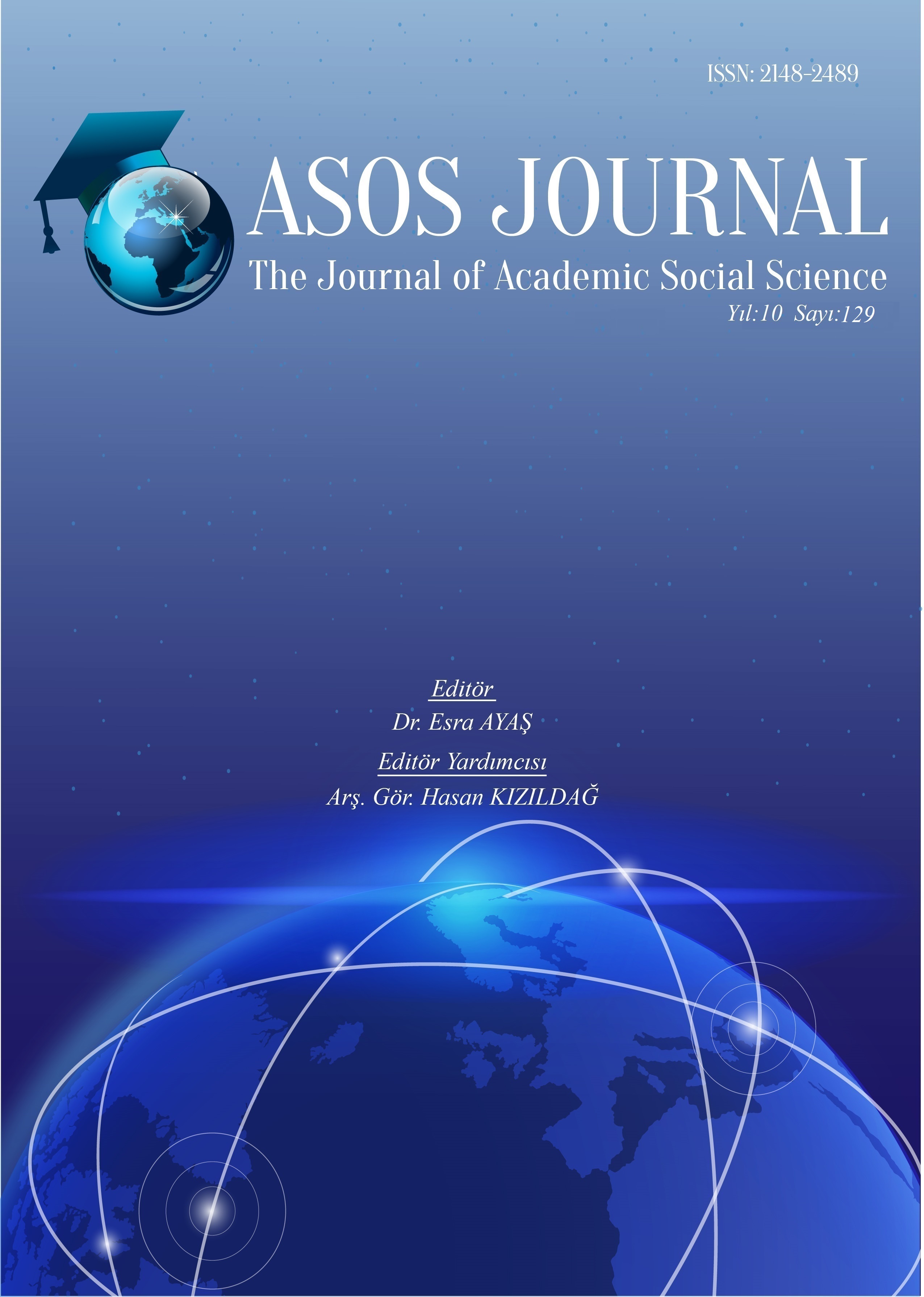Author :
Abstract
Amerikalı Psikiyatrist Irvin Yalom tarafından kaleme alınan bu eser, günümüzde olduğu gibi tarihte yer alan doktor hasta ilişkisinin de başlı başına bir çalışma alanı olduğunu göstermektedir. Eser üç tarihi aktörün kurgusal iletişimi etrafında kurulmuş bir sahnede, psikanalizin doğuşunu tetikleyen dinamiklerin ortaya konduğu bir senaryo ile sunulmaktadır. Bu yönüyle yazar psikanalizin perde arkasında bulunan fenomenleri okuyucuya sunmaktadır. Tıp tarihi açısından önemli olan bu eser çalışmamızın konusunu oluşturmaktadır. Edebi metinlerin yazıldığı dönemin ahlaki ve etik yaklaşımından bağımsız olamayacağı fikrinden yola çıkarak hekim hasta ilişkisi türlerinin, tıp etiği açısından değerlendirilmesi amaçlanmıştır. Eserde, inceleme konusunu oluşturan etik yaklaşımların tıp tarihinde uygunluğunu kontrol eden tarihsel yöntem benimsenmiştir. Eser içinde yer alan hekim ve hasta profillerinin etik ilişki çerçevesinde temel unsurlarının dikkate alındığı perspektifte değerlendirme yapılmıştır. Eserdeki hekim-hasta ilişkisinin egemen unsurlarının doğruyu söyleme, Paternalizm ve Holistik yaklaşım olduğu görülmüştür ve bu kavramlar eserin kaleme alınmış olduğu tarihsel süreç içinde değerlendirilmiştir.İletişim modeli olarak kullanılan karşılıklı konuşma metodu döneminin oldukça ilerisinde bir teknik olarak karşımıza çıkmıştır. Bu sayede paternalist geleneğin hastaya biçtiği edilgen kimlikten hastanın sıyrılmasına, zamanla hekim-hasta ilişkisinde daha etkin bir rol almasına kapı aralamıştır.
Keywords
Abstract
Written by the American Psychiatrist Irvin Yalom, this work shows that the doctor-patient relationship, which takes place in history as it is today, is a field of study in itself. The work is presented on a stage built around the fictional communication of three historical actors, with a scenario that reveals the dynamics that triggered the birth of psychoanalysis. In this respect, the author presents the phenomena behind the scenes of psychoanalysis to the reader. This work, which is important for the history of medicine, is the subject of our study. Based on the idea that literary texts cannot be independent of the moral and ethical approach of the period in which they were written, it is aimed to evaluate the types of doctor-patient relationship in terms of medical ethics. In the work, the historical method that checks the relevance of the ethical approaches that are the subject of the study in the history of medicine has been adopted. An evaluation has been made in the perspective that the basic elements of the doctor and patient profiles in the work are taken into account within the framework of the ethical relationship. It has been seen that the dominant elements of the doctor-patient relationship in the work are telling the truth, Paternalism and Holistic approach, and these concepts have been evaluated in the historical process in which the work was written. The conversation method used as a communication model emerged as a technique well ahead of its period. In this way, it opened the door for the patient to get rid of the passive identity that the paternalist tradition imposed on the patient, and to take a more active role in the doctor-patient relationship over time.
Keywords
- Aktaş, Ş. (2005). Etik ve edebî metin ilişkisi üzerine. Erdem, 15 (44), 135-146.
- Aslan, S. & Altınöz, EA. (2010). İçgörü kavramı ve şizofreni. Psikiyatride Derlemeler. Olgular ve Varsayımlar (RCHP),23(32),1-2.
- Bayır, M. (2019). Nietzsche felsefesinde insan ve ahlak sorunu. Nosyon.Uluslararası Toplum ve Kültür Çalışmaları Dergisi, (3), 21-36.
- Chapman, A. & Chapman-Santana, M. (1995). The influence of Nietzsche on Freud’s ideas. British Journal of Psychiatry, 166(2), 251-253. doi:10.1192/bjp.166.2.25.
- Çobanoğlu, N. (2016). Tıp etiği ışığında hekim hasta ilişkisi. Sağlık ve İnsan. ss.18-20
- Frederich Nietzche: Stanford Encyclopedia of Philosophy https://plato.stanford.edu/entries/nietzsche/. Erişim tarihi: 11.04.2011
- Grünbaum, A. (1983). Logical Foundations of Psychoanalytic Theory. In: Hempel, C.G., Putnam, H., Essler, W.K. (eds) Methodology, Epistemology, and Philosophy of Science. Springer, Dordrecht. https://doi.org/10.1007/978-94-015-7676-5_61
- Gubert, E. (2009). Book Review: Name of Book: When Nietzsche Wept: A Novel of Obsession.
- Gökalp, Y. (2009). Modern Dünyanın Sorunu: Değerlerin Değersizleşmesi Siyasal Felsefede Nihilizm ve Nietzsche. Yüksek Lisans Tezi, Gazi Üniversitesi Sosyal Bilimler Enstitüsü Kamu Yönetimi Anabilim Dalı Siyaset ve Sosyal Bilimler Bilim Dalı.
- Levy, NB. (2001). The Yalom reader: Selections from the work of a master therapist and storyteller. American Journal of Psychiatry, 158(4), 665-a.
- Marinoff, L. (2009). Synchronicities, serpents, and “something else-ness”: A meta-dialogue on philosophy and psychotherapy1. _Philosophical Practice_ 4 (3), 519-534.
- Paulsson, E. (2017). An Alternative History of Psychoanalysis: Fact and Fiction in Irvin D. Yalom’s When Nietzsche Wept. https://www.divaportal.org/smash/get/diva2:1121635/FULLTEXT03.pdf Skues, RA. (2006). Introduction: The Changing History of a Case History. In: Sigmund Freud and the History of Anna O. Palgrave Macmillan, London. https://doi.org/10.1057/9780230625051_1 . Erişim tarihi: 09.04.2022.
- Vural Arslan, E. (2019). Alternatif tarih yaratımında yaşam öyküsel romanın kullanımı: Ben de Halimce Bedreddinem. Yeni Türk Edebiyatı Araştırmaları, 22(22), 81-110.
- Yalım, Y. (1992). Tıp Etkinliğinde Hekimin ve Hastanın Rolleri, Doktora Ders Notları.
- Yalom, I. D. & Babacan, A. (1998). Nietzsche ağladığında. Ayrıntı Yayınları.
- Yeşiltaş, A. (2019). Tıp uzmanlık tarihi ve tıpta uzmanlaşmadan aşırı uzmanlaşmaya. Türkiye Klinikleri Tıp Etiği-Hukuku Tarihi Dergisi, 27(1), 65-72.
- Sigmund Freud “ Who was Sigmund Freud” https://www.freud.org.uk/education/resources/who-was-sigmund-freud/. Erişim tarihi: 11.04.2022.





